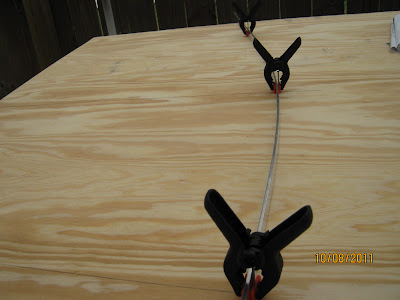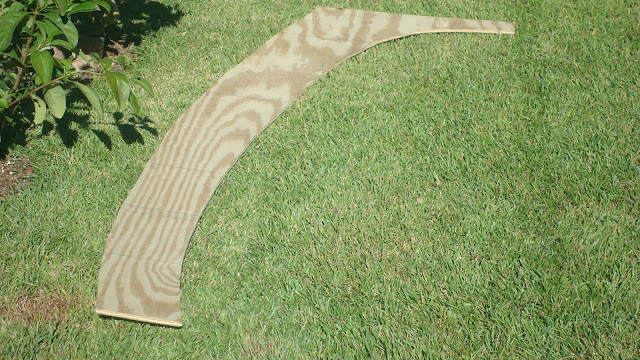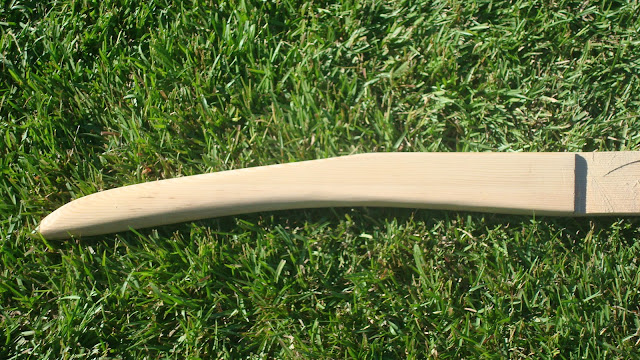Now that I have the decks all cut out it's time to make the bulkheads. I made the transom first by measuring out my lines. The top is curved so I put nails at the top of each edge and one in the middle.
 |
| Transom Lofting |
The curve was too severe for a batten so I clamped a flexible piece of metal to the nails.
 |
Then I lofted the line and made the cuts. Here is what it ended up looking like.
 |
| Transom |
Some boats don't even have a transom but it's pretty important on my boat. The rudder is attached to it and it's structural because it ties the ends of both decks and the side panels together. Not to mention it helps to keep the water on the outside of the boat. Three very important attributes.
Next came the forward bulkhead which has two access holes in it. The mast box will end up against the middle of it and I'll have a little covered stowage space between it and the bow.
 |
| Forward Bulkhead |
And finally came the lazarette. It has one big hole in it which the tiller will pass through.
 |
| Lazarette |
Here are all three of them lined up. It kind of surprised me how small the transom is compared to the bulkheads. I hope I measured it right! I checked the measurements at least five times before I cut it out and then I checked them again after I cut it out.
 |
| Vertical Pieces |
I had been talking about needing to make some wheels to go on a frame that I will use to wheel the boat around once I start putting all of these parts together. Lacey must have been listening because the other day I came home and she was waiting out front for me with these.
 |
| Smart Ass Dog |
You didn't here it from me, but she was tough to live with the rest of the day because she was quite proud of herself and acting kinda cocky.












